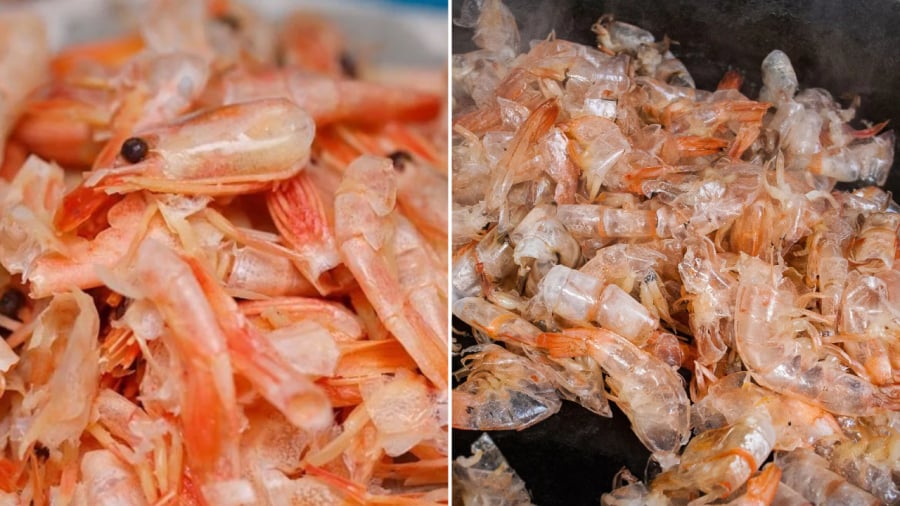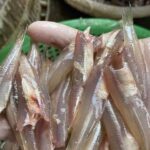There is a common belief that shrimp shells and heads are rich in calcium, leading people to consume these parts, especially feeding them to children. But is this belief truly grounded in fact?
What Is in Shrimp Shells and Do They Contain Calcium?
The majority of people assume that shrimp shells are a good source of calcium and can benefit bone health. However, research reveals that shrimp shells, like those of many other animals, contain little to no calcium. Therefore, eating shrimp shells is not an effective way to boost calcium intake.
Additionally, shrimp shells are difficult for the human digestive system to process, especially for those with weaker digestion. While the shells may pass through the digestive tract, they cannot be fully broken down and will be excreted.
For children, consuming shrimp shells can lead to mouth injuries due to their hardness, and they may also pose a choking hazard.
Shrimp shells, like the shells of other crustaceans, contain a natural polymer called chitin. Chitin has been found to lower blood cholesterol levels and aid in preventing obesity. Furthermore, chitosan, a derivative of chitosan in shrimp shells, is believed to help regulate blood pressure in hypertensive individuals. Chitosan impedes the absorption of fat into the body by forming a complex with it, which is then excreted. This process significantly reduces cholesterol levels, thereby promoting cardiovascular health.

Chitosan’s ability to inhibit fat absorption makes it extremely beneficial for individuals struggling with weight issues. It can increase satiety, reduce appetite, and lower fat intake, ultimately contributing to liver health.
Nevertheless, due to their poor digestibility, eating shrimp shells does not offer significant benefits to the body. The exception to this is small shrimp where removing the shell is impractical. For larger shrimp, it is advisable to peel the shells to enhance digestibility.
The most nutritious part of the shrimp is still the meat. For children, it is recommended to feed them the shrimp meat while avoiding the shells.
Which Is Better: Freshwater or Sea Shrimp?
To determine which type of shrimp is superior, one can compare the nutritional values they offer. According to PGS.TS Nguyen Duy Thinh, former lecturer at the Institute of Biotechnology and Food Technology (Hanoi University of Science and Technology), as cited by VietNamNet, freshwater and sea shrimp have almost identical nutritional profiles. However, sea shrimp tend to have slightly less meat.
Referring to the Vietnamese Nutrition Composition Table (National Institute of Nutrition), 100 grams of sea shrimp provide approximately 82 Kcal, 79.2g water, 17.9g protein, 0.9g lipid, 1.60mg iron, 79mg calcium, 37mg magnesium, 184mg phosphorus, 185mg potassium, 0.04mg vitamin B1, and 0.08mg vitamin B2, along with other vitamins and minerals.
In comparison, 100 grams of freshwater shrimp yield 90 Kcal, 76.9 g water, 18.4g protein, 1.8g lipid, 2.20 mg iron, 1120mg calcium, 42 mg magnesium, 150mg phosphorus, 316mg potassium, 0.02 vitamin B1, and 0.03 vitamin B2, in addition to other vitamins and minerals.
Based on these nutritional profiles, there is minimal difference between freshwater and sea shrimp. However, freshwater shrimp have a higher calcium content.
In conclusion, shrimp shells do not contain the levels of calcium commonly assumed, and it is advisable to peel larger shrimp to prevent digestive issues and potential choking hazards. For smaller freshwater shrimp, consuming the shells is acceptable.
5 Golden Rules for Moms to Create a Fun and Nutritious Menu for Toddlers Aged 1-3
“Parents play a pivotal role in their children’s development, and this includes paying close attention to their nutrition and encouraging exploration and play. Nurturing a child’s natural curiosity and providing them with opportunities to engage in playful learning experiences are essential for their overall growth and well-being.”



































